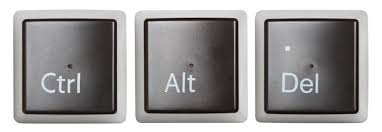Portfolio Manteniance
The words rebalance and redesign sound similar, but are two completely different concepts with different applications. Once you have begun investing you will need to evaluate your portfolio on a regular basis. Life happens. So your portfolio can not be set it and forget it. You may even have to make significant changes down the road.
4 reasons why you would need to make significant changes:
- Entering a new phase of life that requires a new investment horizon (i.e. Retirement).
- Experiencing unexpected changes in your family such as a birth, death or divorce.
- Encountering a change in financial circumstances, ideally a new job or asset.
- Setting a new financial goal, such as buying a house or paying for college
It is important to make changes to the composition of your portfolio so it aligns with your goals and objectives at all times.
You can change your portfolio through two different strategies: redesign and rebalance.
Redesign: Starting Over From Scratch
Do you feel that your portfolio needs a complete redo?
Redesigning, the more drastic of the two measures, involves dismantling your old portfolio and starting fresh with a new one. I would consider redesigning in only extreme cases. Every part of your portfolio must be failing to meet your expectations. You should not choose this strategy based solely on investment performance. Also, there are fees and taxes to consider (for non-retirement accounts) which might reduce the overall effect of the whole recreation too!
It’s ideal to do basic maintenance and upkeep. For example, it’s always cheaper to change the oil, than buy a new car. The same is true with your portfolio. Plus, it’s likely there are investments may be working just fine.
A reason to redesign:
When faced with a major life change such as retirement, you should definitely consider redesigning. If you are about to retire and have not done much to change your portfolio in 30 years, it may be time for a complete overhaul. You need to build a portfolio that reflects how your investment needs and goals have changed. This process might involve eliminating investment categories that may no longer be appropriate while adding investments that better suit your current needs. Example, growth vs income.
Reason not to redesign:
Don’t be overly hasty to ditch your portfolio, however. For example, while loss of a job certainly qualifies as a major life change, it does not necessarily mean that you should redesign. If you are panic-stricken over the sudden loss of income, keep in mind that it may only be temporary. You may find a new job that restores your financial security and supports the investment goals on which your original portfolio was built. If your goals are the same, your portfolio can still help you meet them! Take a deep breath.
Rebalance: Responsible Portfolio Maintenance
A Rebalance involves restoring your original asset allocation to its’ original composition.
You simply make the necessary changes to bring your asset allocation back in line with the original plan. Since this plan was originally determined to be appropriate for your investment objectives, a minor adjustment should keep you on course to reach those goals. What I mean is, buy more of the investments that have gone down in value (losers) and sell off some of the investments that have gone up. (winners)
Example(s):
With $100,000 to invest.
Original asset allocation calls for 50 percent stocks, 30 percent bonds, and 20 percent cash.
Start out with $50,000 in stocks, $30,000 in bonds, and $20,000 in cash at the beginning of the year.
If over the course of the year, your stocks provide a 10 percent return, bonds a 5 percent return, and cash a 1 percent return. Consequently, assuming that you reinvested your earnings, at the end of the year you have $55,000 in stocks, $31,500 in bonds, and $20,200 in cash. This means that the distribution of your assets has changed to 52 percent stocks, 30 percent bonds, and 18 percent cash.
Caution: The example above is for illustrative purposes only and does not represent the actual returns of any investment or portfolio.
Solution
This change in percentages may pose a problem because you chose the original percentages with the intention of maintaining them in accordance with your own particular risk tolerance and expected return. Since stocks now make up a larger percentage of your portfolio than you had once intended, the volatility of your portfolio may have increased
There are a few simple adjustments you can use to realign your portfolio.
Sell some of your stock so that the ratio of stocks to other investments drops.
Sell some stock and invest that money in other assets so they once again are at their original percentages.
Add money to the portfolio and buy more bonds and cash or you can do some combination.
Importance
A rebalance is just as important as getting the oil in your car changed, you are maintaining what you’re invested in. Many investment advisers recommend using shifts of 5 percent or more as a trigger to rebalance. Others recommend that it be done every year. Tax time or year-end is usually a good time to check up on your portfolio and think about rebalancing if necessary.
Remember it’s about logical steps toward reaching your financial goals. I am always open to questions about rebalancing from my clients. Feel free to reach out regarding your routine maintenance or complete overhaul of your portfolio.
Caution: You should consider the transaction costs and/or tax consequences that might result from rebalancing. For example, selling investments as part of your rebalancing strategy might trigger capital gains tax and/or (in the case of a mutual fund) redemption fees. Before investing in a mutual fund, carefully consider its investment objectives, risks, charges, and expenses, which can be found in the prospectus available from the fund. Read it carefully before investing.




3 thoughts on “Rebalance or Reboot”
Comments are closed.